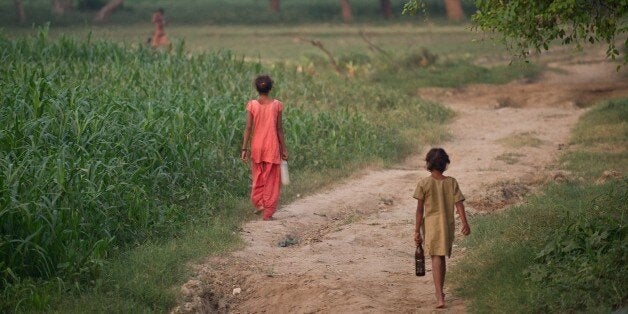
Last week, the Thomson Reuters Foundation outlined how Bangladesh, India's much poorer and flood-prone neighbor, has had more success building bathrooms for its citizens.
In just over a decade, Bangladesh managed to decrease the percentage of people defecating in the open from 19 percent in 2000 to just 3 percent in 2012.
However, across the border in India the picture is very different. According to the World Bank, over 600 million people, roughly 53 percent of Indian households, still use public streets and fields as bathrooms.
And it's the women of India who are paying the highest price.
The shortages of basic bathroom facilities in India leaves women and girls with no option but to venture out, usually late at night, to relieve themselves in the open.
The world was exposed to this shocking reality when two teenage cousins in Uttar Pradesh were found raped and hanging from a tree just this past summer.
Even though the issue is especially acute in the rural areas, mothers in the urban slums have horror stories about local men staring at them, threatening them and shouting lewd comments while women venture out to defecate in the open.
"We have had one-on-one fights with thugs in order to save our daughters from getting raped," one mother described. "It then becomes a fight that either you [the thug] kill me to get to my daughter or you back off."
In addition to the horrifying threat of assault and harassment, not being able to access toilets has a series of health implications for women and girls from urinary tract to kidney infections, not to mention the sheer stress of not being able to access a bathroom during your monthly menstrual cycle.
Why in 2014 are women and girls in India, the world's largest democracy, facing so much difficulty getting to a bathroom?
At the core of this issue is the low position of women in Indian society.
From religion to caste, Indian culture consistently degrades women to the point that they cannot even access the most basic of human rights: to remove bodily wastes with dignity and privacy.
This lack of value placed on the lives of women and girls begins at birth. Three millions girls are considered to be 'missing' in India where female infanticide, the killing of baby girls, is so common that the UN has called it the most dangerous place in the world to be born a girl.
To a large extent, India is an unsafe place for women period. Last year, a series of high-profile gang-rape cases were globally publicized, and it is estimated that every 30 minutes a woman in India is raped. Delhi is considered the country's rape capital.
Today in India, it is easier to get a mobile phone than find a toilet. How can a country that has more Internet users than the United States, still not provide its citizens with decent latrines?
Although social attitudes towards women and girls in India will take time to evolve, the issue of building accessible bathrooms is something we can resolve right now and right away, and it appears as though progress is on the horizon.
The country's new prime minister, Narendra Modi addressed the issue in a landmark Independence Day speech, vowing that his government would put "toilets before temples," and eliminate open defecation. And last week, the organization Sulabh International unveiled 108 cheap new toilets in the same village where the two girls were raped and hung.
"I believe no woman must lose her life just because she has to go out to defecate," the founder of the charity, Bindeshwar Pathak said.
Building safe toilets for women and girls across India may be the most fitting tribute to those two girls who were denied dignity in life and death. But how India tackles this public health crisis will determine the direction of the women's rights movement in the country for years to come.
